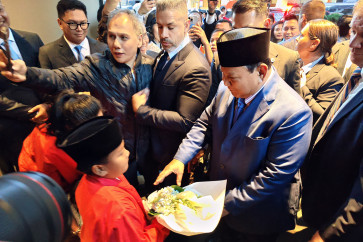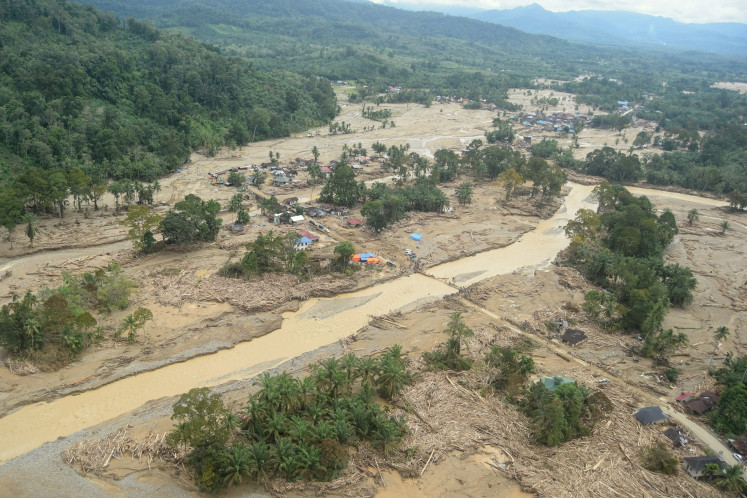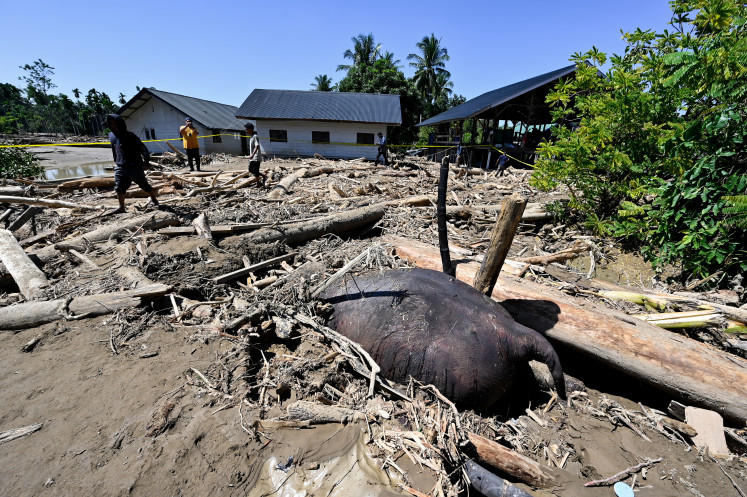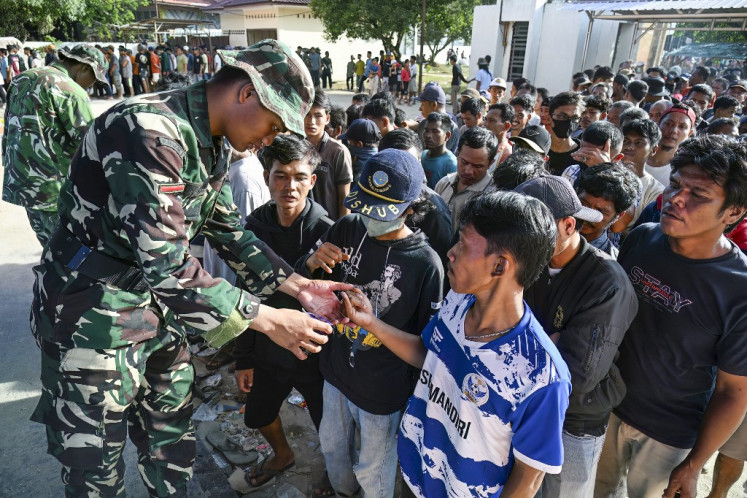Popular Reads
Top Results
Can't find what you're looking for?
View all search resultsPopular Reads
Top Results
Can't find what you're looking for?
View all search resultsWeekly 5: Surviving public transportation
While many Jakartans are lucky enough to sit comfortably in their own cars, millions commute almost everyday with various modes of transportation that might lack in safety
Change text size
Gift Premium Articles
to Anyone
 (JP/Ricky Yudhistira)" border="0" height="339" width="510">(JP/Ricky Yudhistira)
(JP/Ricky Yudhistira)" border="0" height="339" width="510">(JP/Ricky Yudhistira)Buses
Commuters and buses have a love-hate relationship. Metro Mini buses, especially, have the widest routes compared to other buses. But the poorly maintained vehicles and bad service often make passengers go a little crazy.
Some golden rules inherited from experienced Metro Mini passengers to newbies usually comprise putting your bags in front of your body to prevent pickpockets, stepping left feet first when getting off buses and paying with exact change so the conductor does not try to find excuses to unilaterally ask you to pay higher fare.
Meanwhile, for passengers of Transjakarta buses, things that need to be considered are buying an electronic ticket card so you do not have to stand in line to buy tickets and stay alert when you travel late at night as the buses stop only at particular shelters. Avoid these buses when traffic is bad as you might end up waiting for hours.
Taxis
Make sure when taking a taxi to jot down the taxi number and text message it to relatives or friends to be on the safe side. Choose a taxi from a firm that has a good reputation to avoid any risks. Make conversation with your taxi driver as a way to avoid malicious intent.
Prevent being dragged to longer routes by letting your driver know the preferred route to your destination.
 commuter: (JP/P.J. Leo)
commuter: (JP/P.J. Leo)
Commuter trains
It is certainly safe to say that commuter trains are the most reliable public mode of transportation in Jakarta nowadays as they do not have to compete with other vehicles on the road as they have their own tracks.
But commuters should expect crowds, especially during peak hours, as around 500,000 people favor to daily take trains.
Although it is prohibited, some passengers deal with the crowds by bringing foldable stools so they do not need to stand when there are no more seats left.
For female passengers, they can take women-only carriages provided by city train operator PT KAI Commuter Jabodetabek in each train. You can access train schedules through twitter account @CommuterLine, which will also inform you of when a train is delayed.
âAngkotâ
Drivers of public minivans, popularly called angkot, patiently wait for customers. They stop right in the middle of congested areas to wait for their vans to fill-up before commencing on the drive. Hence, passengers also need to be patient.
As a number of rape and murder cases have occurred in angkots, it is safer for female passengers to take angkots that have other women on board.
hile many Jakartans are lucky enough to sit comfortably in their own cars, millions commute almost everyday with various modes of transportation that might lack in safety. These people often have to squeeze into buses, minivans and commuter trains operating at overcapacity to reach their destinations. Here are some tricks and tips that commuters might find helpful: (JP/Ricky Yudhistira) Taxis commuter: (JP/P.J. Leo) 'Angkot' (JP/P.J. Leo)
W
Buses
Commuters and buses have a love-hate relationship. Metro Mini buses, especially, have the widest routes compared to other buses. But the poorly maintained vehicles and bad service often make passengers go a little crazy.
Some golden rules inherited from experienced Metro Mini passengers to newbies usually comprise putting your bags in front of your body to prevent pickpockets, stepping left feet first when getting off buses and paying with exact change so the conductor does not try to find excuses to unilaterally ask you to pay higher fare.
Meanwhile, for passengers of Transjakarta buses, things that need to be considered are buying an electronic ticket card so you do not have to stand in line to buy tickets and stay alert when you travel late at night as the buses stop only at particular shelters. Avoid these buses when traffic is bad as you might end up waiting for hours.
Make sure when taking a taxi to jot down the taxi number and text message it to relatives or friends to be on the safe side. Choose a taxi from a firm that has a good reputation to avoid any risks. Make conversation with your taxi driver as a way to avoid malicious intent.
Prevent being dragged to longer routes by letting your driver know the preferred route to your destination.
Commuter trains
It is certainly safe to say that commuter trains are the most reliable public mode of transportation in Jakarta nowadays as they do not have to compete with other vehicles on the road as they have their own tracks.
But commuters should expect crowds, especially during peak hours, as around 500,000 people favor to daily take trains.
Although it is prohibited, some passengers deal with the crowds by bringing foldable stools so they do not need to stand when there are no more seats left.
For female passengers, they can take women-only carriages provided by city train operator PT KAI Commuter Jabodetabek in each train. You can access train schedules through twitter account @CommuterLine, which will also inform you of when a train is delayed.
Drivers of public minivans, popularly called angkot, patiently wait for customers. They stop right in the middle of congested areas to wait for their vans to fill-up before commencing on the drive. Hence, passengers also need to be patient.
As a number of rape and murder cases have occurred in angkots, it is safer for female passengers to take angkots that have other women on board.
'Ojek'
Motorcycle taxis or locally known as ojek, is a fast option to avoid traffic.
Although the drivers are willing to take passengers all the way to remote areas, they are very stiff with fares.
There are no written or fixed fares, so you need to be smart when bargaining with the drivers.
Ask locals about normal fares to a particular destination and make a deal with a driver before hopping on. 'JP
Your Opinion Matters
Share your experiences, suggestions, and any issues you've encountered on The Jakarta Post. We're here to listen.
Thank You
Thank you for sharing your thoughts. We appreciate your feedback.
Share options
Quickly share this news with your network—keep everyone informed with just a single click!
Gift Premium Articles
to Anyone
Share the best of The Jakarta Post with friends, family, or colleagues. As a subscriber, you can gift 3 to 5 articles each month that anyone can read—no subscription needed!
Continue in the app
Get the best experience—faster access, exclusive features, and a seamless way to stay updated.









